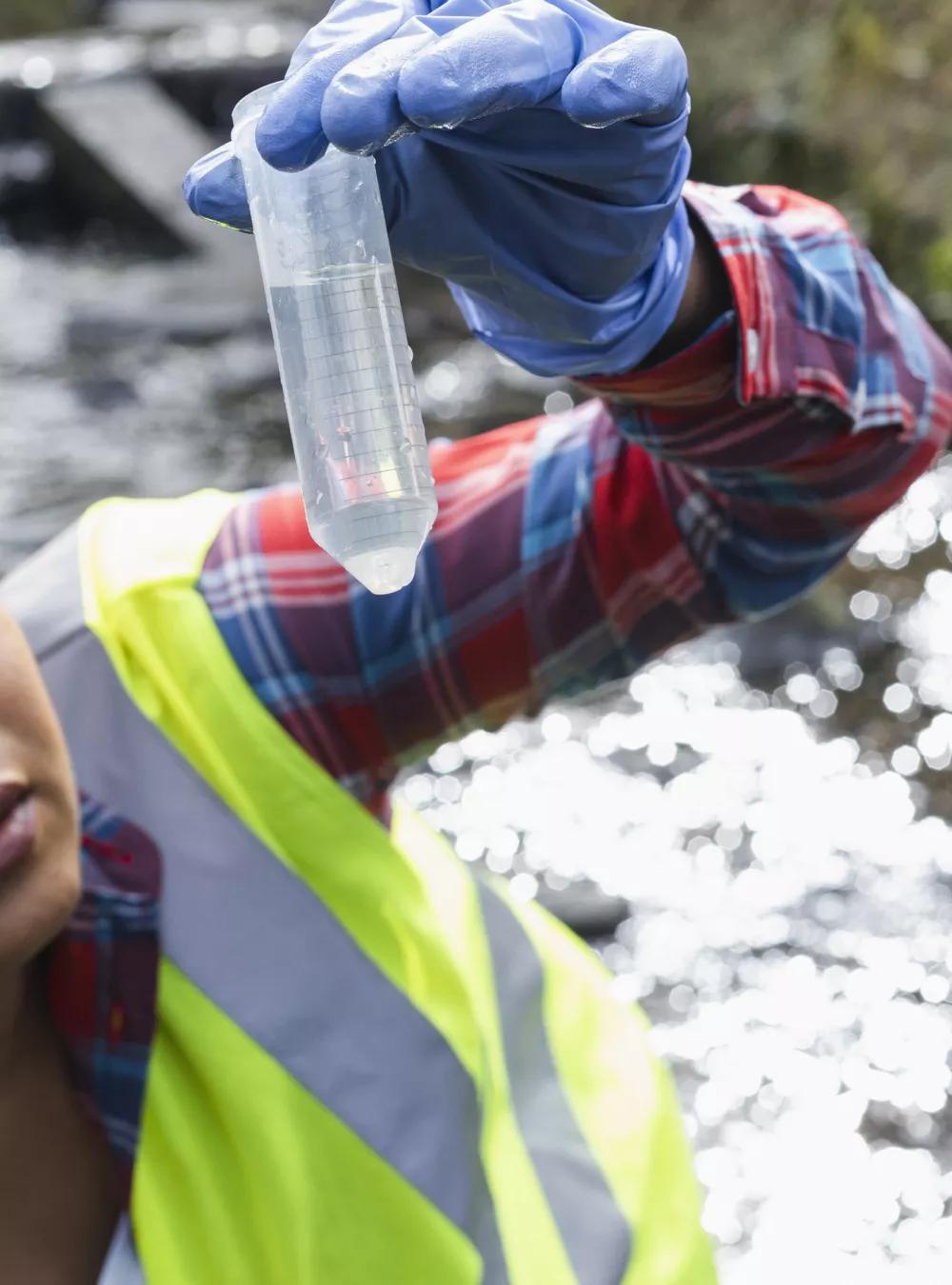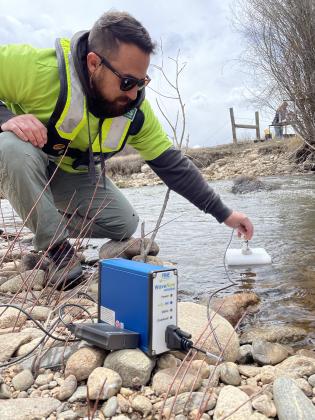Your drinking water likely contains some contaminants belonging to a large class of chemical compounds known as PFAS. Some of these can cause significant health problems. MITRE’s new sensor could help sponsors quickly sense, track, and assist in mitigating this threat.

What’s in Your Water? Our New PFAS Sensor Could Tell You
For many Americans, there’s something dangerous in their drinking water: a group of thousands of synthetic chemicals known as PFAS (per- and polyfluoroalkyl substances). Some forms of PFAS persist for over 1,000 years. Unfortunately, they’re also extremely useful chemicals, found in everything from firefighting foam and non-stick pans to stain-resistant fabrics and fast-food wrappers.
Today, these manufactured chemicals are present in our homes, in our fields, and in our bodies. High concentrations of certain PFAS compounds can cause liver damage, weaken immune systems, and increase cancer risk. Pregnant women and their fetuses are particularly vulnerable.
Understanding where these pollutants are and how they move around various ecosystems is a daunting problem. It’s also the type of sprawling, system-of-systems challenge MITRE specializes in. Combining sensor development, AI-enhanced mapping, advanced simulations, and data tracking, MITRE researchers Ryan Hollins, Jamie Grove, and Joe Roberts dedicated themselves to the challenge.
This is a problem that’s been building for some time in both urban and rural areas.
They proposed a research project within MITRE’s independent research and development program. Guido Zarrella, an innovation area lead, immediately saw the potential and greenlit the project.
“This is a problem that’s been building for some time in both urban and rural areas. We saw three specific gaps—in sensing, mapping, and modeling,” he says. “The fact that this team combined its expertise and pursued the three gaps in parallel helped drive the project’s success.”
New Sensors, Clearer Data, Better Decisions

Concern about PFAS chemicals’ impact on people has been growing, but tracing it remains a challenge. The current testing method for PFAS is high-resolution liquid chromatography coupled with mass spectrometry. Unfortunately, it’s an expensive process that can take weeks for a laboratory to analyze—too long to create a useful method for tracking pollution or modeling its behavior.
As the sensor team set out to create a reusable field detector, they focused on a specific PFAS compound that could be isolated and detected. That data could act as a proxy for the rest. Eventually, the detector could measure many different forms of PFAS simultaneously, allowing for more widespread use and clearer data.
Initial tests in the creeks and rivers of the Colorado Rockies proved incredibly valuable. The prototype lacked the detailed PFAS concentration data of a mass-spectrometer but provided an accurate estimate and took less than 30 minutes to collect and process.
“We also developed a cell phone app to control the sensor,” says Grove. “This means time, GPS, and PFAS data can immediately be shared with the teams who need it. This information could prove critical for mapping and modeling efforts.”
As the PFAS sensor project moved from idea to experimentation, agencies like the Environmental Protection Agency and U.S. Geological Survey took notice. So did some MITRE staff.
Doug Robbins, vice president of MITRE Labs, is one of more than 300 MITRE staff in southern New Hampshire dealing with PFAS pollution at home. Some must rely on bottled water because their wells are so polluted.
New England is finding more and more PFAS-polluted areas, particularly near its historical paper mills, tanneries, and other manufacturing sites. Several local farms have shut down because PFAS chemicals were found in fields of vegetables and in the grass that fed dairy cows.
“This is a national-scale problem,” Robbins says. “We need to create an environment for decision makers to access the information, understand the information, and then act on it.
“That’s what we’re doing here.”
Helping New Sponsors Tackle New Problems
Since 2018, over 100 laws have been passed in 24 U.S. states governing PFAS pollution, and several proposed federal regulations are working their way through the system. But measuring the level of pollution is still a significant problem for many MITRE sponsors. PFAS’s technical, data, and communications complexity creates significant challenges—but also new opportunities for connection, another MITRE strength.
“To make sure we’re addressing the right problems, we’ve been working with a range of organizations and agencies, including interagency groups,” Hollins says. “We’ve even been able to engage with the water treatment operators receiving the brunt of the public pressure.
“We want to make sure our solutions work for all of them.”
The team designed the PFAS analytics and decision support model to help agencies more quickly identify areas that should be tested for PFAS. The researchers used geospatial data from government and industry, including military sites, airport runways, solid waste landfills, and manufacturing sites.
“We’re focusing on developing geospatial analytics for mapping U.S. surface waters vulnerable to PFAS contamination,” Hollins adds. “This will inform where we place PFAS sensors as well as downstream risks of contamination.”
While the technology isn’t yet ready for widescale deployment, the team envisions that soon data will gush from embedded sensors in water treatment plants, creeks, and rivers—allowing scientists and public health officials to understand the flow and impact of PFAS across the landscape in real time.
Join our community of innovators, learners, knowledge-sharers, and risk takers. View our Job Openings.